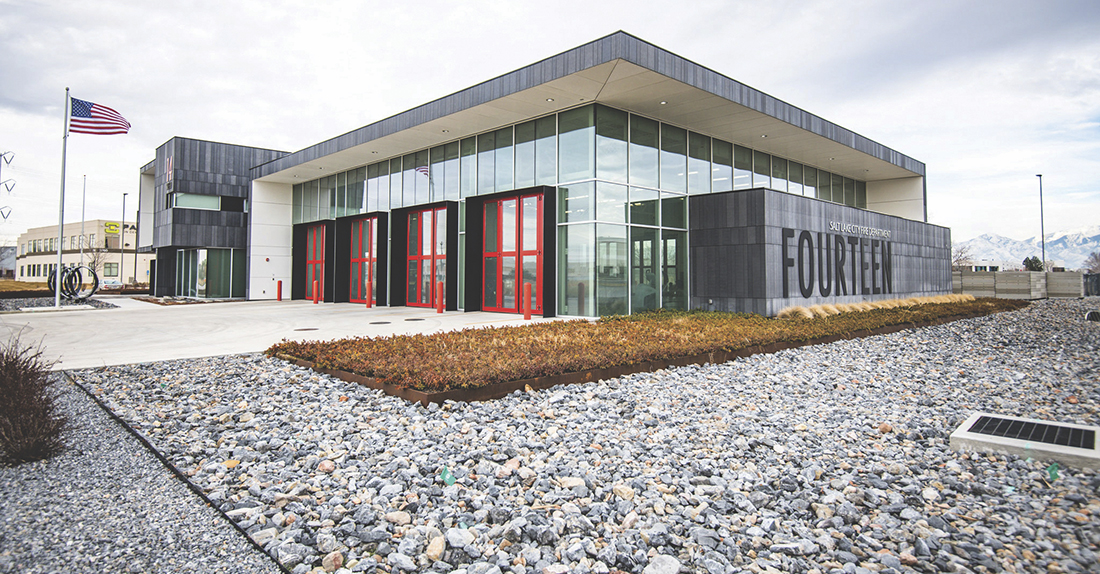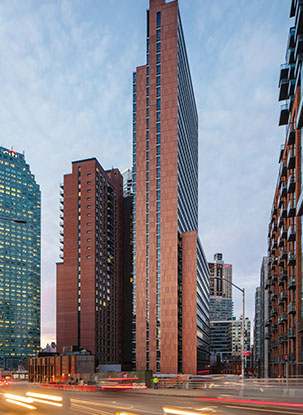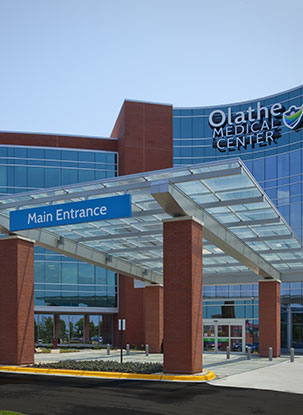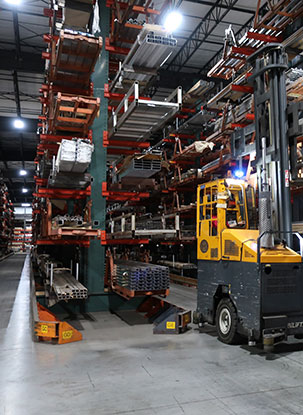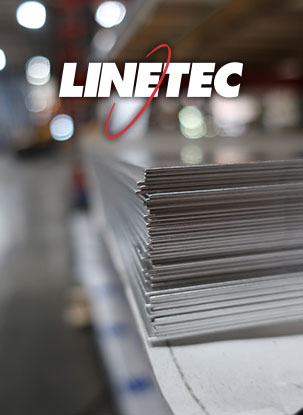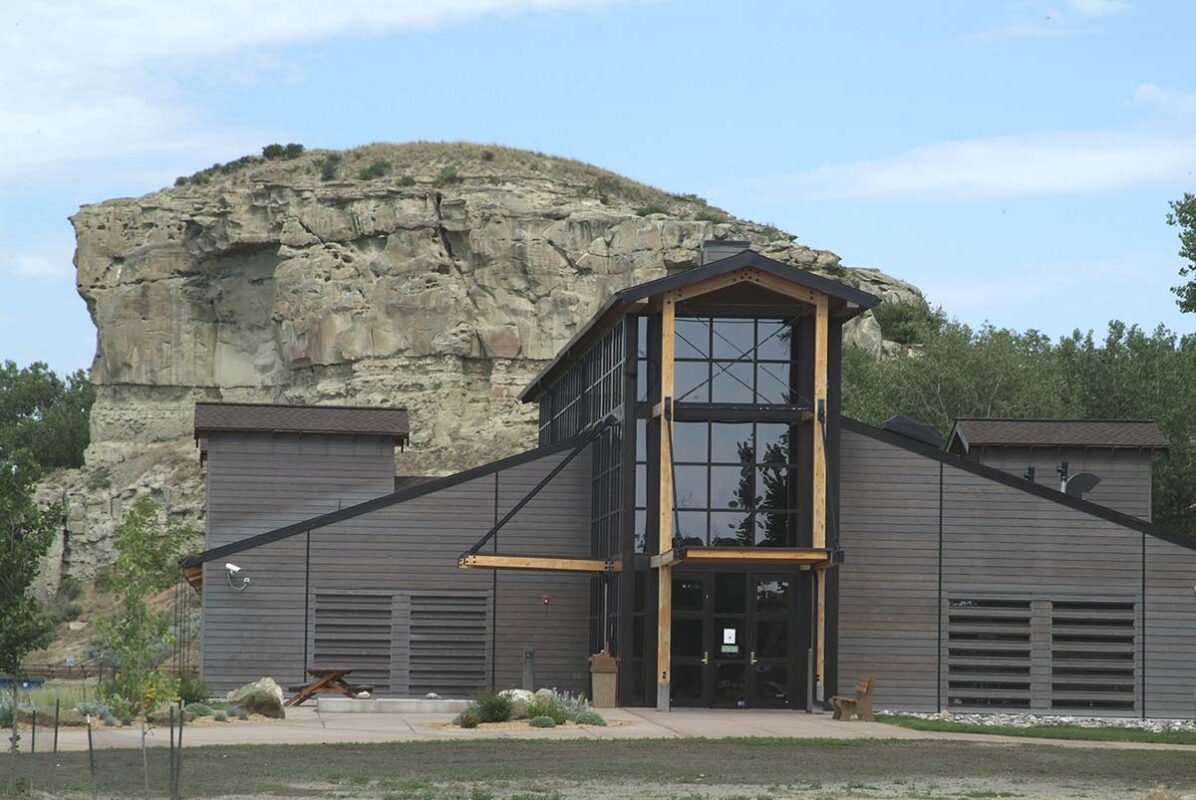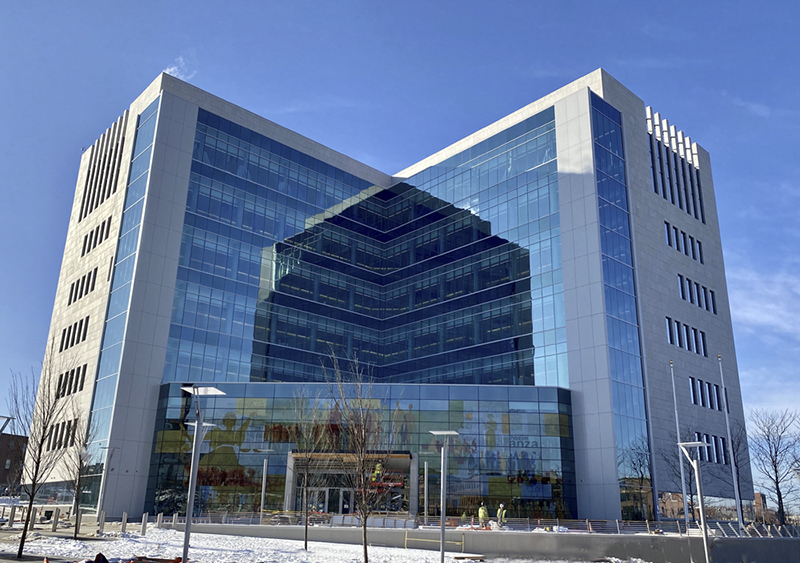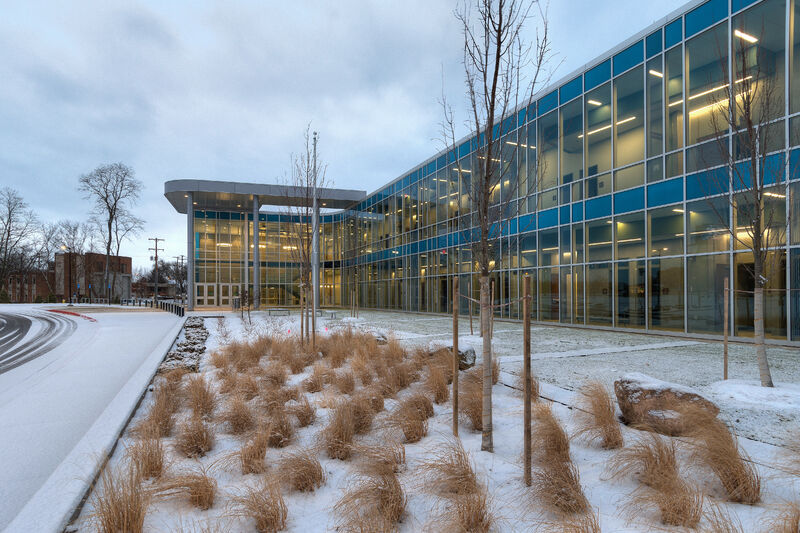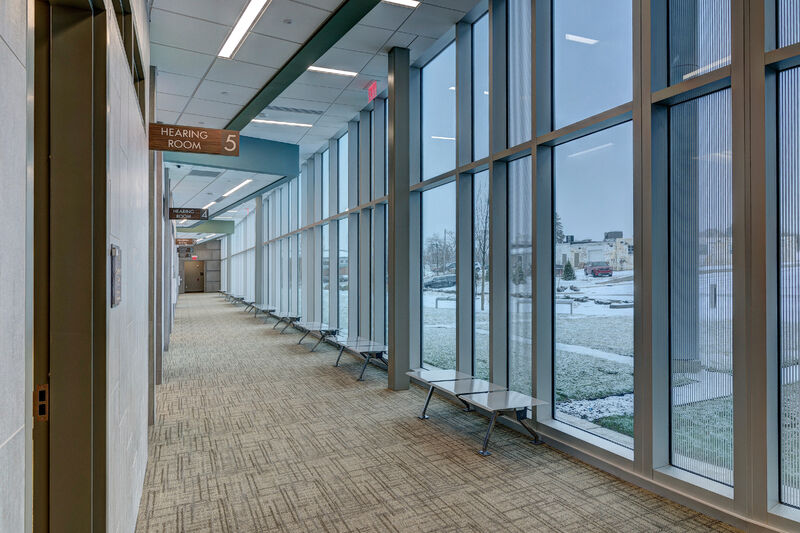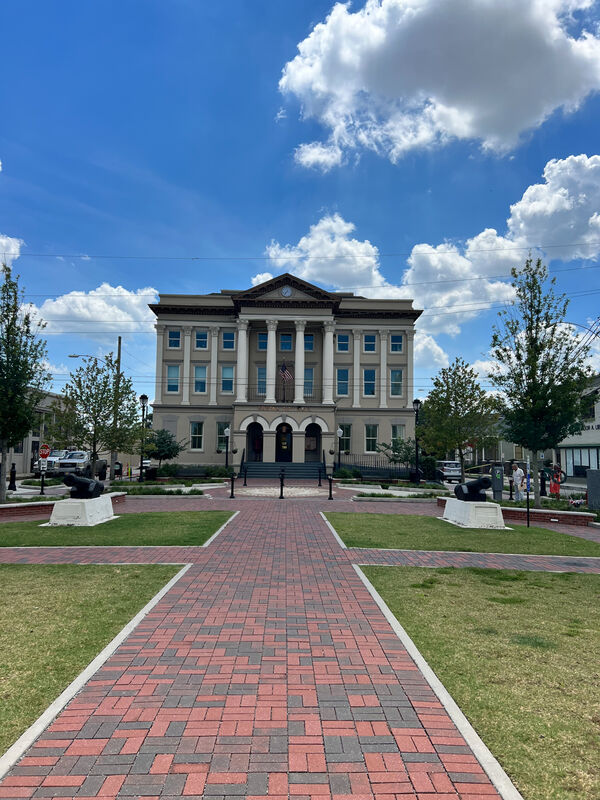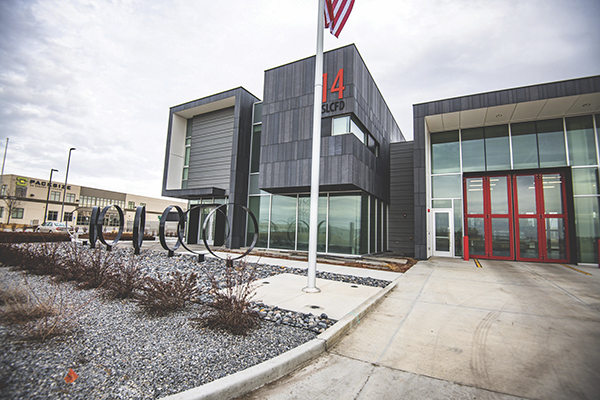Serving the needs of the public, our governmental and civic spaces must be built to balance long-term operational efficiency, resiliency, functionality and affordability with respect to taxpayer dollars. High-performance, finished architectural aluminum building products maximize our collective investment in public properties, helping deliver life-long value for current and future generations.
Choosing high-performance finishes protects aluminum architectural products’ durability and longevity. This in turn minimizes government buildings’ maintenance while saving labor, repairs, replacement materials and related costs. Selecting a partner who offers both architectural finishing and energy improvement services gives window and door manufacturers an advantage in meeting the needs of our federal, state, local and municipal buildings.
Reduce Maintenance, Increase Savings
The U.S. Government Accountability Office (GOA) recently reported that the cost of deferred property maintenance and repair increased approximately $22 billion between 2017 and 2022 for four selected federal agencies. Among the agencies reviewed, the General Services Administration (GSA) showed an increase of 126%.
The GSA owns and leases more than 363 million square feet of space in 8,397 buildings in more than 2,200 communities nationwide. The GSA’s 2024 Federal Buildings Fund specifically noted the need to address “façades and inefficient deteriorating window systems” as a “critical work item.”
Minimizing maintenance and repairs on our existing government properties and public buildings can save Americans billions of dollars. When upgrading, renovating and retrofitting these facilities, high-quality, high-performance, finished aluminum architectural products support low-maintenance, cost-effective operation.
Linetec provides aluminum product manufacturers with a choice of finishing solutions suitable for maintaining our civic institutions. To ensure the highest performance level, specify AAMA 2605 for 70% PVDF resin-based painted coatings and AAMA 611 for Class I anodized finishes. These AAMA specification standards are published by the Fenestration & Glazing Industry Alliance (FGIA).
Because most government facilities serve a large number of people, the aluminum surfaces on both the high-traffic exteriors and interiors benefit from these exceptionally hard-wearing and long-lasting finishes. Building products with 70% PVDF resin-based painted coatings and Class I anodized finishes can remain in service for several decades.
Opened in 1898, the Adair County Courthouse in Kirksville, Missouri, is listed on the National Register of Historic Places. In recent years, maintenance of the building had been neglected due to a lack of sufficient funding. During its 120+ years of public service, the building’s windows had been replaced, but these also were now outdated, inefficient and in disrepair. With community support through a quarter-cent capital improvement sales tax, the county was able to make necessary performance upgrades, while preserving the historical appearance, including its radius and elliptical shapes.
Winco Windows worked with Linetec to maintain the existing window openings’ shapes and aesthetic. Linetec finished the aluminum replacement windows and trim using a high-performance Class I anodize in a Medium Bronze color. Finished-to-match aluminum panning was wrapped over the existing frames to improve the courthouse’s appearance and provide a low-maintenance solution.
The new, finished aluminum, thermally broken casement and single-hung units from Winco Window significantly increased the courthouse building’s energy and operational efficiency, and returned the property to its attractive, prominent position in the downtown area.
Lead by Example
With more than 300,000 buildings, the U.S. government is the single largest energy consumer and building manager in the nation. Improving these buildings’ energy efficiency and performance presents another critical opportunity to save operational costs, conserve resources and reduce emissions. Government findings indicate that buildings are a significant contributor to carbon emissions, with building operation comprising 28% of total annual greenhouse gas emissions, and building materials and construction comprising another 10%.
To improve our future outlook, the Federal Sustainability Plan established an ambitious path to achieve net-zero emissions by 2045. The federal government’s plan also includes midpoint goals for 2032 to achieve a 50% reduction in building emissions and a 65% reduction in building operations. Implementing the plan involves deep energy retrofits for existing facilities. All new construction and major modernization projects larger than 25,000 square feet must be net-zero emissions by 2030.
Committed to these goals, the GSA uses the U.S. Green Building Council’s LEED® green building certification system as a tool for evaluating and measuring achievements in sustainable design. The GSA requires, at a minimum, new construction and substantial renovation of federally owned facilities to be LEED Gold. Leased buildings are required to earn an ENERGY STAR® label.
The Lowell Justice Center is the first courthouse in Massachusetts to be LEED Platinum certified. Finegold Alexander Architects designed the seven-story, 265,000-square-foot building to demonstrate the state’s commitment to net-zero energy initiatives, environmental and economic responsibility.
Helping achieve its goals, Linetec finished Wausau Window and Wall Systems’ curtainwall, ribbon windows and punched openings using 70% PVDF resin-based architectural coatings in Flagstone and Knights Armor gray colors to complement the justice center’s granite cladding. In addition, Linetec painted Wausau’s zero sightline vents, terrace doors and factory-assembled sun shade systems in matching colors.
The window systems’ extruded aluminum framing was manufactured with a high recycled content in three different sizes. Linetec’s painted finishes help conceal small imperfections in the secondary billet. The aluminum framing system was engineered with 3/8-inch thermal separation and helps reduce the building’s energy by 40% compared to similar facilities.
Energy-Efficient, Environmentally Responsible
Manufacturers of high-performance, aluminum-framed window, curtainwall, storefront and entrance systems play a key role in contributing to government buildings’ ENERGY STAR labeling, LEED certification and sustainable requirements.
As a single-source solution, Linetec conveniently coordinates finishing and thermal improvement services for you in one location. We offer poured-and-debridged or polyamide insulating strips as thermal barriers in aluminum framing systems. Finished fenestration systems with high thermal performance can attain the net-zero energy requirements of federal buildings, as well as improve energy efficiency for other state, local and other public facilities.
In addition to energy efficiency, government and civic projects frequently request low- and no-VOC finishes to meet LEED criteria and sustainability goals. Anodized finishes contain no VOCs. Linetec’s anodize process by-products are recyclable and anodized aluminum is 100% recyclable. To safely remove the VOCs in the liquid paints’ solvents, Linetec uses a 100% air capture system and regenerative thermal oxidizer. By managing this in its quality-controlled facility, there is no adverse environmental impact either at Linetec or on the jobsite.
LEED and other governmental sustainable and design guidelines recognize the benefits of daylighting and views. For example, the U.S. Courts Design Guide highlights that “windows allowing an exterior view and natural light are highly desirable” in judges’ conference rooms, court libraries, offices and other areas.
Michigan’s family division of the Kalamazoo County Circuit Court is housed within the new, three-story Gull Road Justice Complex. The 85,000-square-foot government center also includes judges’ chambers, hearing rooms, courtrooms, holding rooms, and offices for the court clerk, Friend of Court and county prosecutor, and is linked to the Juvenile Detention Center via an enclosed walkway. Architects at TowerPinkster and HOK worked with the County to design a facility that conveyed a transparency and connection to the community, while providing a secure and functional structure.
Meeting the project’s aesthetic and performance goals, Tubelite fenestration systems were installed on both the interior and exterior, maximizing views and daylight. Linetec finished all Tubelite curtainwall, storefront, entrances, interior framing and exterior sun shades in a durable, easy to clean and maintain, no-VOC Class I clear anodize. Thermal improvement services also were provided to contribute to the occupants’ comfort and the building’s energy-efficient operations. During summer months, cooling costs can be significantly lowered with sun shades, while still allowing natural light to fill the interior The resilient anodized finish will protect the justice complex’s architectural aluminum products and preserve its appearance for many years to come.
Curves, Color and Customization
From historic national monuments and state capitols to modern county justice centers and local libraries, our government and civic buildings come in all sizes, styles and shapes. Their architecture typically presents a sense of institutional permanence with sturdy foundations and strong construction materials. Using finished aluminum-framed glazing systems combines the durable reliability with transparency and a visual connection between the interior space and the community.
Contemporary designs incorporate storefront, curtainwall, window wall and entrance systems with protective qualities that can enhance security and resist earthquakes, hurricanes and extreme temperatures.
Listed on the National Register of Historic Places, New Orleans’ Gretna City Hall has served its community as government building since 1907, weathering hurricanes and time. City leaders committed to upgrading the old, water-damaged windows with high-performance, hurricane impact-resistance units. In addition, the local historical review boards ensured that the replacement windows would replicate the original historic appearance including their sculpted trim.
To deliver the required performance and aesthetic, Winco Window partnered with Linetec to finish the new single-hung windows using a 70% PVDF resin-based architectural coating in a Bone White color to match the original windows’ ornate trim and panels. Winco’s windows feature an integral sloped exterior glazing leg with hurricane-resistance laminated glass and weather-tight construction. The high-performance finish meets AAMA 2605 specifications and helps protect the aluminum from New Orleans’ coastal salt spray and humidity.
One of the first net-zero energy fire stations in the country and LEED Gold-certified, Salt Lake City’s Fire Station No. 14 features high-performance, aluminum framing systems from Tubelite finished by Linetec in durable, clear, Class I anodize. Blalock & Partners Architectural Design Studio worked with fire station specialist TCA Architecture + Planning to meet all of the project’s objectives.
Salt Lake City’s net-zero energy facilities mandate and “Climate Positive 2040” plan seek to achieve net-100% renewable electricity by 2030 and to reduce carbon pollution by 80% by 2040. Exemplifying this directive, Station 14 features a solar panel roof array, geothermal heating and cooling, and high thermal performance building envelope. Creating the station’s high-performance façade, Tubelite provided its triple-glazed 400TU Series Therml=Block® curtainwall, as well as its T14000 I/O Series multi-pane storefront, operable windows, side entrance doors and INT45 interior framing systems.
Along with anodizing all the Tubelite systems, Linetec provided the dual, thermal polyamide insulating strut for its curtainwall. The high-performance systems and low-maintenance, durable finishes support the city’s long-term, energy-efficient and cost-effective goals.
Clear anodized finishes and mica and metallic coatings emphasize a high-tech, modern appearance. Classic architectural designs often feature arched and circular shaped framing. When updating to modern fenestration, Linetec can provide stretch forming to bend and curve your aluminum extrusions prior to finishing. Our in-house blending lab can match colors for aesthetic continuity between eras and expansions.
Architectural aluminum products also can be selected with specialty finishes that resemble other construction materials, often at a more economical price point and with all the benefits of finished aluminum.
- Want the warmth of wood without the maintenance? Check out our wood grain finishes for aluminum.
- Want the high-end appearance and tactile feel of terra cotta without the expense? Touch our textured terra cotta
- Want the shiny copper of a new penny without the patina? Take a look at our Copper Anodize.
- Want a marble wall panel without the heavy lifting? Talk to us about spattercoat.
An exterior color can quickly communicate the space’s purpose to the public. From firehouse red to postal blue to library bronze, Linetec has the finishes to match your project’s message. You also can find plenty of tan, beige, gray, black and silver shades in our Color Select and Spec online library of more than 60,000 color chips, as well as our full range of anodize color finishes.
For personalized assistance in finding a finish to fit your next government building project, please contact your Linetec sales representative.

